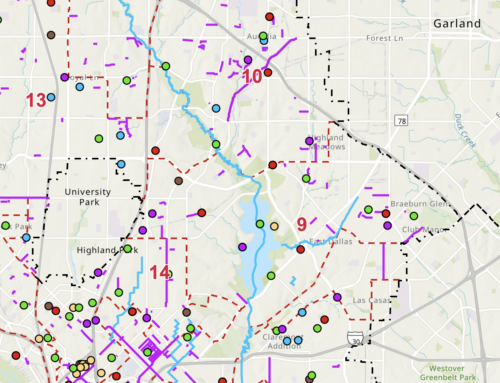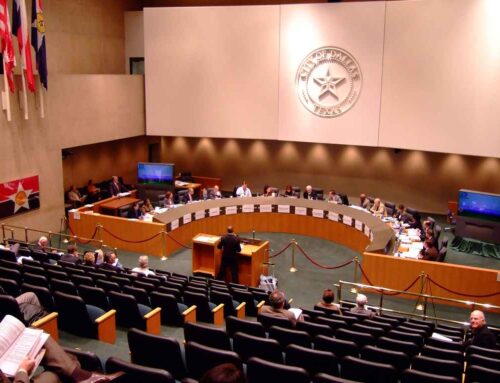The termination ordinance is a tool that has existed for Dallas homeowners to protect their neighborhoods from non-conforming uses since the early 1950’s.
Through the years, the ordinance has been used to close down quite a few noxious uses. But during the past few years, there has been an increase in its use by homeowners throughout the City.
Literally thousands of properties were made non-conforming in 1987 when the City Council rezoned the entire City to solve the problem of cumulative zoning.
“There are bunches of non-conforming properties out there,” says Elias Martinez, senior planner with the City’s Planning Development Development Services.
“The zoning rules changed in 1987, and a lot of people didn’t change with it.”
“What the homeowners tell me is it’s a way to upgrade their neighborhoods. In the past 20 years, neighborhood associations have become more active. I think this is just a manifestation.”
Martinez says the ordinance is mainly used on industrial, commercial and apartment structures.
Craig Holcomb, a councilman at the time of the rezoning who represented East Dallas and Oak Lawn, says the Council did its best to address the existing problem of cumulative zoning.
Under cumulative zoning, properties in light commercial zoning could be built with literally no guidelines. The zoning created a mess, Holcomb says: There could be a 40-story office building right next to a neighborhood – which raised questions about privacy and appropriate locations for certain uses.
While rezoning, Holcomb says the Council wanted to grandfather some uses, but the City Attorney advised the Council it could not pick and choose properties. The Council had to blanket zone the City, knowing it was going to make several properties non-conforming.
“I think that given the City Attorney’s advice, it was the only decision we could make,” Holcomb says. “But it did create some problems that we could not foresee.”
In addition to having more non-conforming uses on which to file complaints, more neighborhoods are becoming aware of the ordinance and how it can work to their benefit, says Gene Akard, a development code specialist with the Building Inspection Division of the City.
“The trend has been to hit some of these apartments,” Akard says. “You’re seeing more and more of this.”
“I think you can look and see the community is making a stand: ‘Hey, maintain your apartment,’” Akard says.
If it wasn’t for the ordinance, Akard says homeowners wouldn’t be able to get rid of non-conforming uses.
“It is a tool for the community,” Akard says.





